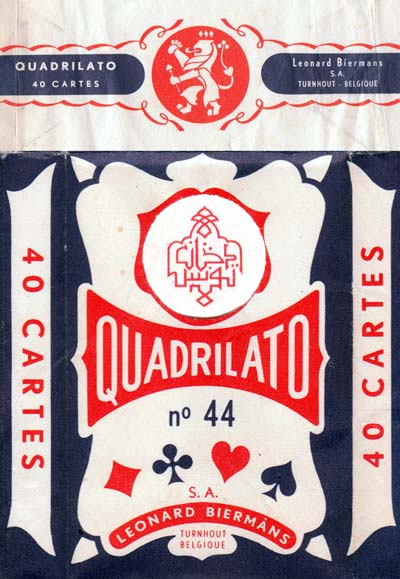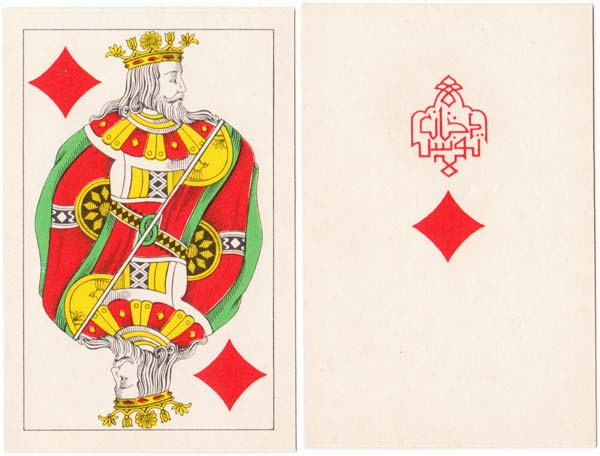Léonard Biermans, Turnhout
Léonard Biermans had been employed by Brepols from 1871-1874 before opening his own playing card factory in 1875.
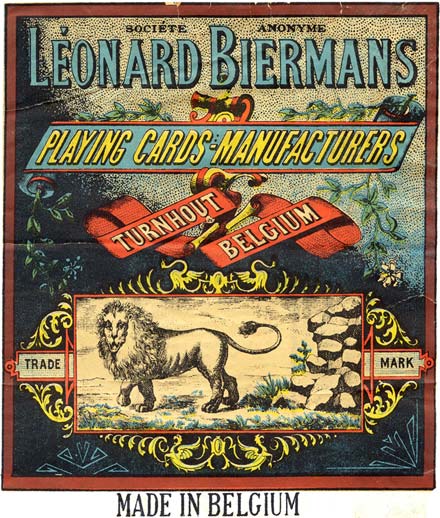
Léonard Biermans, Turnhout, Belgium, 1875-1970
Léonard Biermans had been employed by Brepols from 1871-1874 before opening his own steam-powered playing card factory in 1875. In 1879 he married Marie-Thérèse, daughter of Van Genechten’s manager, Charles Poupaert, so playing cards were never far from his attention. Léonard Biermans died in 1896 and the company continued as a limited company, S.A. Léonard Biermans.
Biermans initially built up trade with India and South-East Asia (Burma) and business prospered until the competition became fierce and India became independent. After that Biermans expanded into other markets, winning several exhibition medals and also registering a patent for rounded and gilded corners.
Eventually the firm was merged into Carta Mundi. The Lion (right) was one of Biermans’ many trade marks.
From the beginning Biermans produced a wide range of playing cards which were shipped all over the world. An 1877 export price-list mentions Cartes de Luxe, Impériales, Royales, Italiennes, Belges, Allemandes, Bongoût, Espagnoles, and others. After 1900 Biermans also produced Swiss, Oriental and Congress cards, English packs, Spanish packs, Chinese cards, children’s cards and domino cards. In many cases packs contained scenic aces with views of Belgium, Brasil, France, Germany, Switzerland, Portugal or Holland which appealed as tourist souvenirs. See: Lion Brand No.1492 for Jet Fuels→

Above: finely engraved modern Netherlands type playing cards with scenic aces for Germany, stencil-coloured lithography, no indices, Biermans c.1880
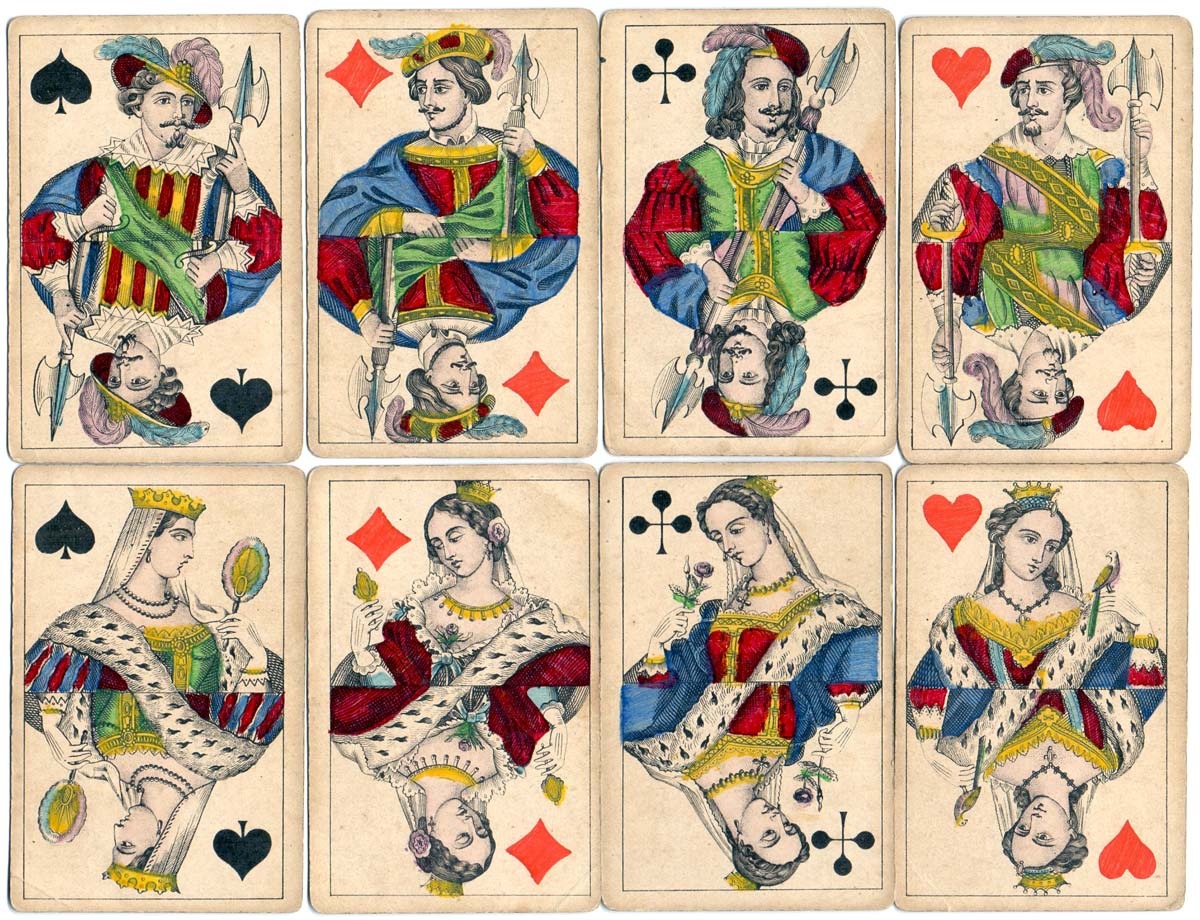
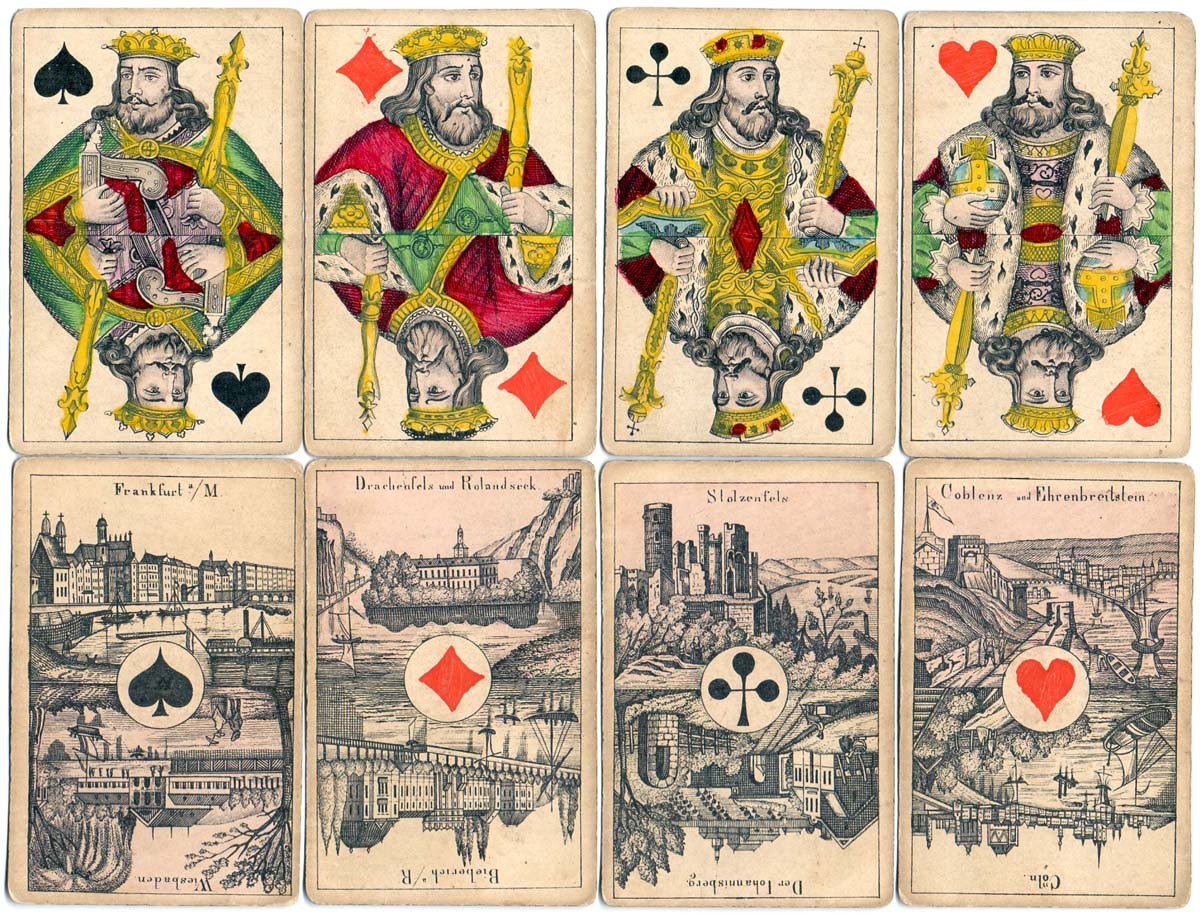
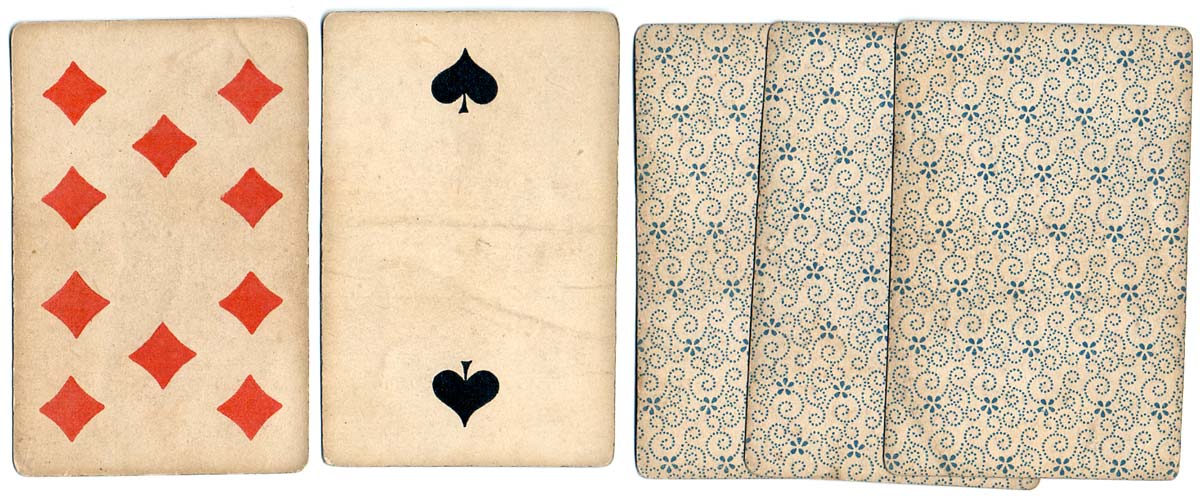
Above: finely engraved modern Netherlands type playing cards with scenic aces for Germany, stencil-coloured lithography, no indices, Biermans c.1880
• See also: Biermans Scenic Aces for Brasil, c.1920

Above: cards from Spanish-suited pack, made in Belgium by Léonard Biermans c.1880. more →
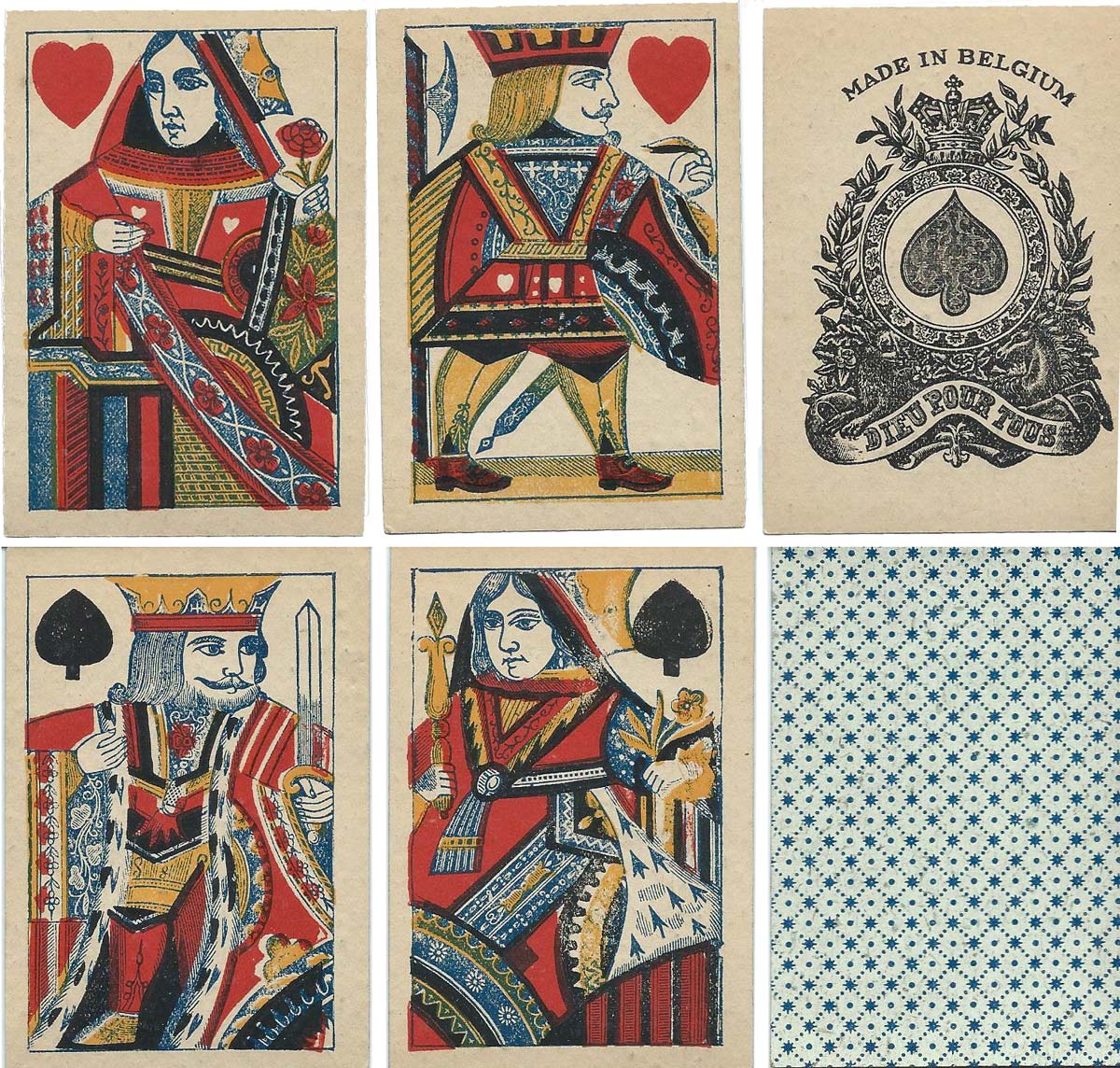
Above: single-ended version of English pattern playing cards produced by Biermans, c.1878. Courtesy Doug Courtney.
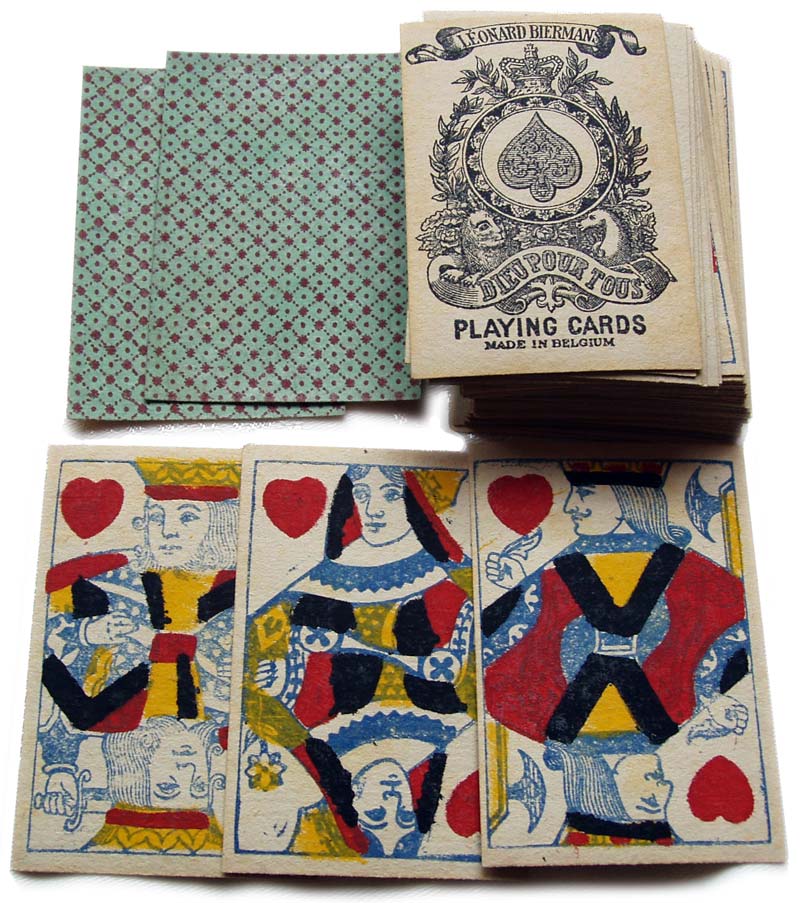
Above: double-ended version of English pattern with ace of spades mimicking the Old Frizzle duty Ace, crude quality stencilling on rough card, produced by Biermans, c.1910.
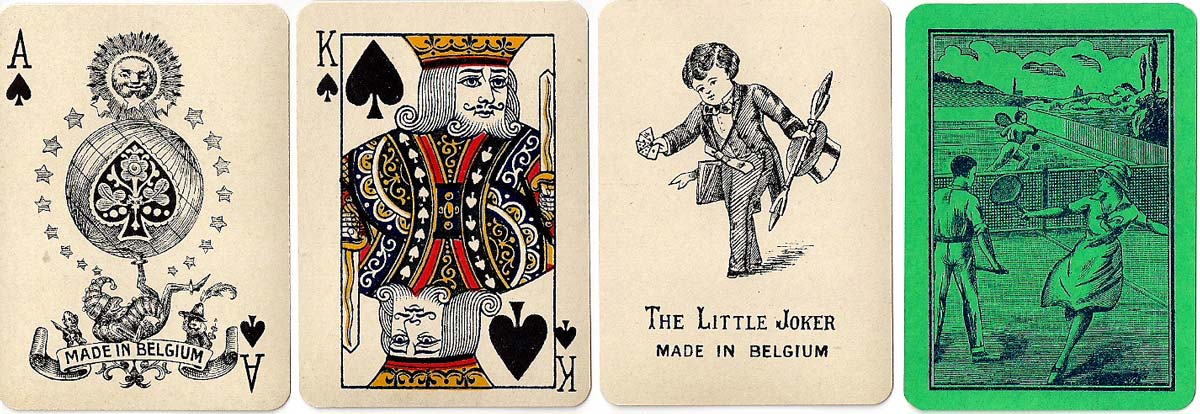
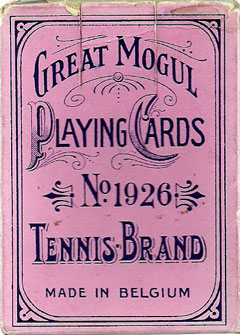
Above: Great Mogul Tennis No.1926 playing cards, c.1926.
This is a very odd deck in that some of the backs are green, some pink and some blue. It has been conjectured that the deck is a salesman’s sample deck, used to exhibit the variety of back colours available. It is strange, however, that whenever I have seen the deck for sale, it is always described as having the same variety of coloured backs. I have never found the deck with just one colour backs, always the sample version. The brand has the number 1926 which, coincidentally, is the year of the deck. The side of the box discloses that the maker is Leonard Biermans, Turnout, Belgium. Images and notes courtesy Rod Starling.

By Simon Wintle
Member since February 01, 1996
Founder and editor of the World of Playing Cards since 1996. He is a former committee member of the IPCS and was graphics editor of The Playing-Card journal for many years. He has lived at various times in Chile, England and Wales and is currently living in Extremadura, Spain. Simon's first limited edition pack of playing cards was a replica of a seventeenth century traditional English pack, which he produced from woodblocks and stencils.
Trending Articles
Popular articles from the past 28 days
Related Articles
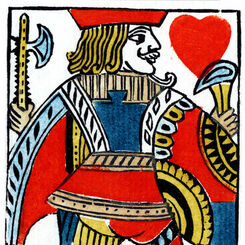
Woodblock and Stencil Jack of Hearts
A limited edition art print of the Jack of Hearts 1984 woodblock joker.
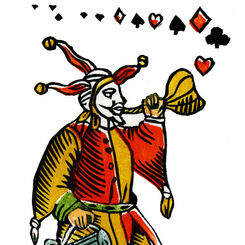
Woodblock and Stencil Joker
A limited edition art print of the 1984 woodblock joker.
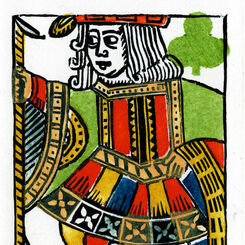
Woodblock and Stencil Jack of Clubs
A limited edition art print of the Jack of Clubs 1984 woodblock joker.
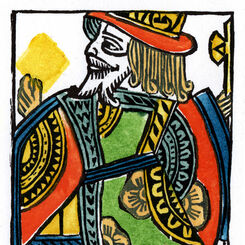
Woodblock and Stencil King of Diamonds
A limited edition art print of the King of Diamonds 1984 woodblock joker.
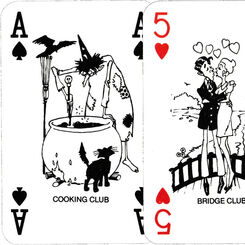
Club Soft Drinks
Promotional pack for Club soft drinks with amusing illustrations of different kinds of ‘club’.
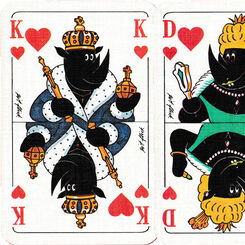
Mit Rhino auftrumpfen
Black rhinos on a publicity pack for Armstrong, a flooring company, with comic designs by Pit Flick....

High School Musical 3: Senior Year
American teen film depicting students staging their last spring musical.
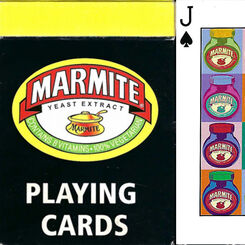
Marmite
Fifty-Four images celebrating a UK savoury spread, that has been around one hundred and twenty two y...
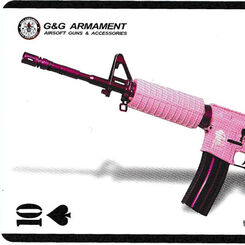
G&G Armament playing cards
G&G Armament Airsoft replica gun playing cards from Taiwan.
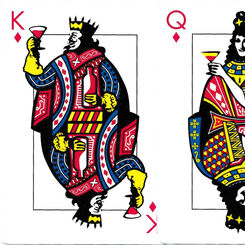
Absolut Deck
Promotional deck published for Absolut Vodka in Sweden.
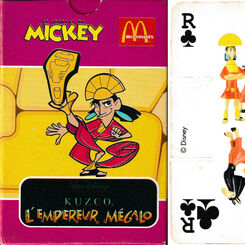
Kuzco, l’empereur mégalo
Notched cards featuring toys representing characters from the Disney film Kuzco, as offered by McDon...
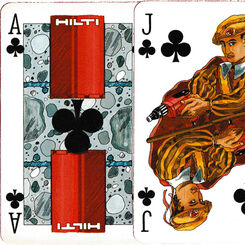
Hilti I
Promotional pack for Hilti power tools, with courts in medieval costume and non-standard pips.
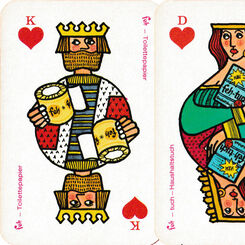
Feh Schnapskarten
Colourful promotional pack for Feh household and toilet papers.
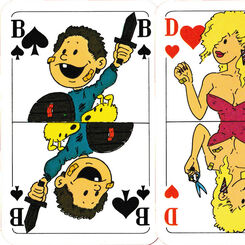
Hansaplast®
Advertising pack for Hansaplast, with comic courts sporting sticking plasters.
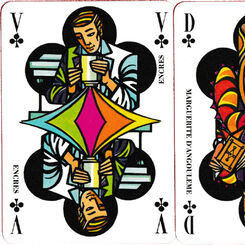
Lorilleux International
Promotional pack for Lorilleux International’s Lotus inks, with designs by James Hodges.
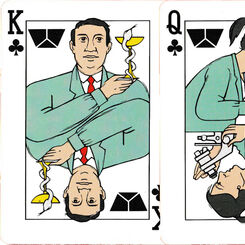
B. Braun-Dexon®
Publicity pack promoting B. Braun-Dexon’s atraumatic needles, with non-standard courts and pips.
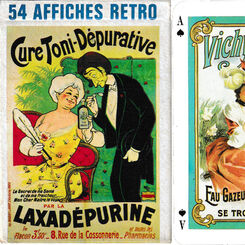
54 Affiches Retro
54 different old French advertising posters, mainly for travel and health products.
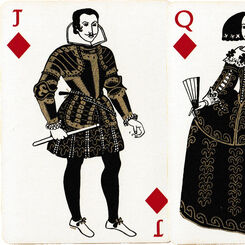
Loewe: Moda Europea Siglo XVII
Luxury pack for the Spanish fashion house Loewe, with 17th century costume designs by Margot Hamilto...

ČZ playing cards
Advertising pack for the Czechoslovak motorcycle factory Česká Zbrojovka.
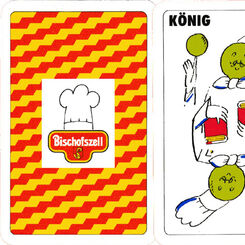
Bischofszell
Advertising pack for the food producer Bischofszell, designed by Heinz Looser-Brenner, with non-stan...

Scheffmacher
Advertising pack for Scheffmacher, master painters in Schaffhausen, with comic designs by Fritz Bünz...
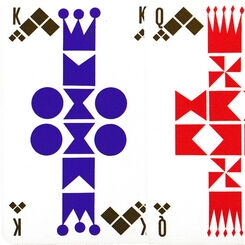
Knoll International
Geometric designs by the French artist Jean Garçon for Knoll International, the furniture company.
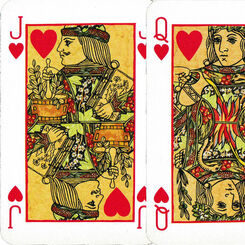
SEMP playing cards
Modified Anglo-American courts advertising a French medical publishing company.
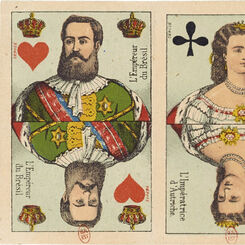
Jeu Quatre Empereurs
Brazilian scenic aces with emperors of Brazil, Austria and France and other dignitaries on the court...
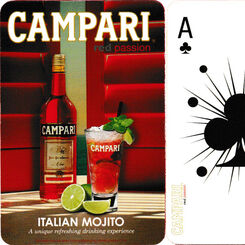
Campari playing cards
Publicity pack for Campari, designed for the Portuguese or Brazilian market.
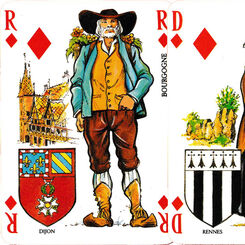
Hôtels-Grils Campanile
Publicity pack for the Campanile hotel and restaurant chain featuring French provincial costumes, wi...
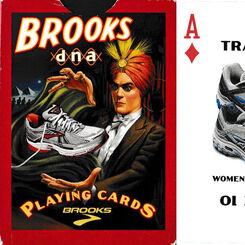
Brooks dna playing cards
Brooks dna playing cards produced by Gemaco for Brooks running shoes.

Golf playing cards
Golf playing cards published by Marks & Spencer, UK.
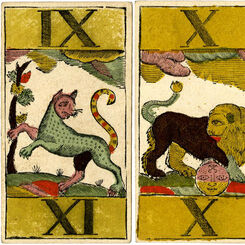
Animal Tarot by J. B Dubois
French-suited Bavarian Animal Tarot by J B Dubois, Liège, Belgium, late 18th C.
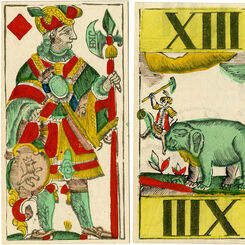
Animal Tarot by J. T Dubois
Early 19th century Animal Tarot pack produced by J T Dubois, Liège, Belgium.
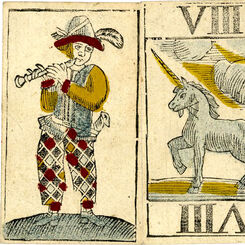
Animal Tarot by G. Larmoyer
Flemish Animal Tarot deck by G. Larmoyer, Liège, 1753.
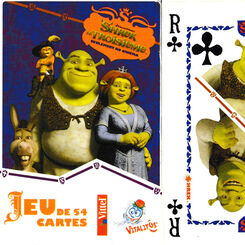
Shrek the Third playing cards
Characters from the 2007 film Shrek the Third, a DreamWorks Animation production.
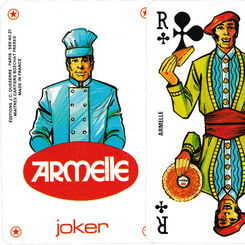
Jeu de cartes Armelle
Advertising pack designed by James Hodges for a company specialising in regional cakes and biscuits....
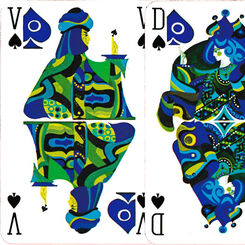
Louis De Poortere
Psychedelic designs promoting Louis De Poortere, a company selling carpets and rugs.
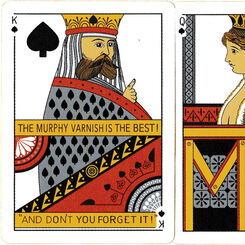
Murphy Varnish pack
Reproduction of the 1883 Murphy Varnish transformation pack, USA, 2019

Pendleton playing cards
Pendleton playing cards inspired by indigenous American artwork, USA, 2019.
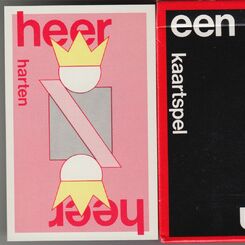
Een Kaartspel
Minimalist playing cards from The Netherlands
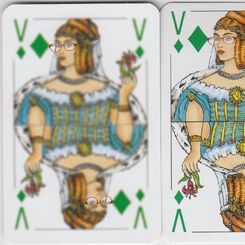
Specsavers playing cards
to help you see better when playing cards

On-line offsite data backup
On-line offsite data backup publicity playing cards produced by The Bunker, United Kingdom, c. 2004....
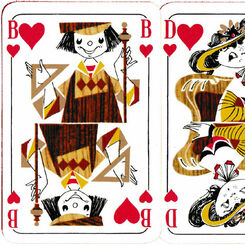
Möbel-Spiel
Publicity pack for the East German furniture industry, with designs by Werner-Hans Schlegel.

Clamcleats playing cards
Clamcleats playing cards for sailors designed by Celia Allison, New Zealand, 1986.
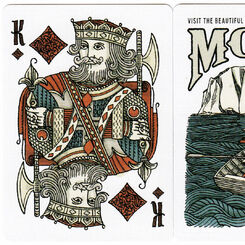
Old School Playing cards from Moon
Designed and published by Leo Scherfig
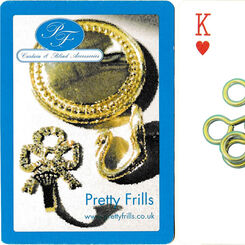
Pretty Frills
‘Pretty Frills’ playing cards promoting curtain and blind accessories.
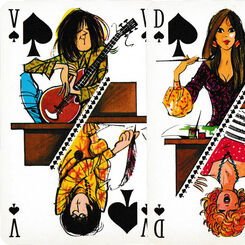
Gibert Jeune
Publicity pack for Gibert Jeune, the famous Parisian bookshop, with designs by James Hodges.


